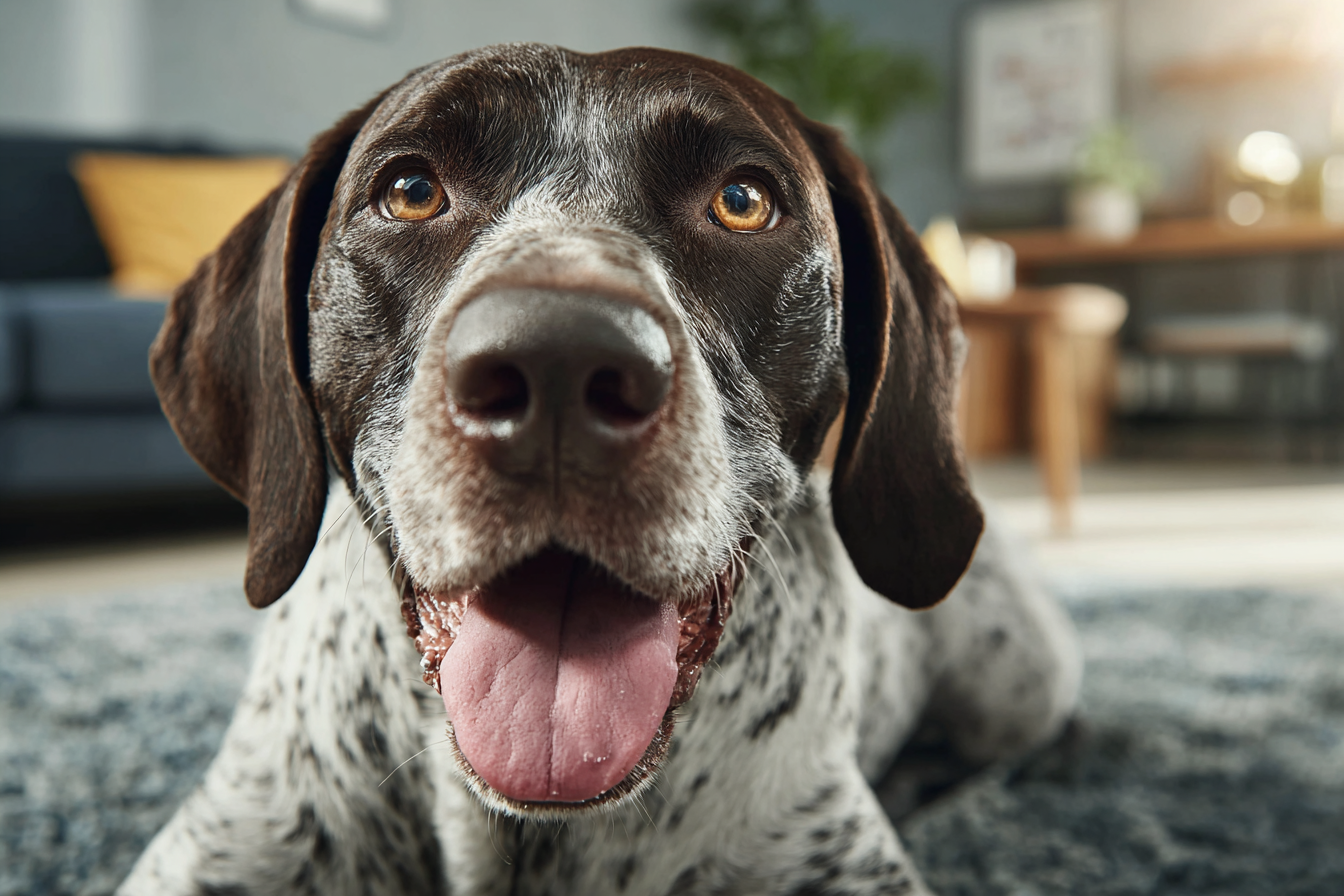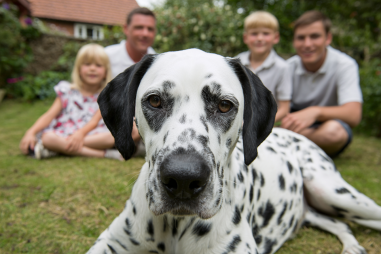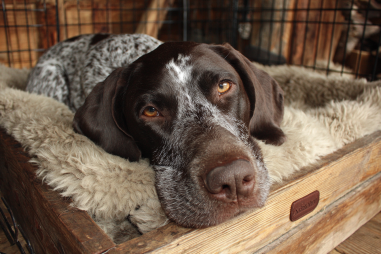Pointers are widely recognized for their boundless energy and love for outdoor activities. These athletic dogs typically thrive in environments where they can run freely and explore wide-open spaces. However, not everyone has the luxury of a sprawling yard or countryside setting. Many Pointer owners live in apartments and wonder if this lively breed can adapt to a smaller, confined space. The good news is that with thoughtful care, exercise, and environmental adjustments, Pointers can lead happy, healthy lives even in apartments. This guide will walk you through practical tips and strategies to help your Pointer flourish in smaller living quarters.
Challenges of Apartment Living for Pointers
Pointers are bred for endurance, speed, and agility, originally developed as hunting dogs who cover large distances. As a result, their natural instincts and energy levels can pose challenges when confined to a small space like an apartment. One of the main difficulties is finding enough room for them to expend their energy physically and mentally. Without appropriate outlets, Pointers can become bored, frustrated, and potentially destructive. Their high drive can also translate into excessive barking or nuisance behavior if their needs are unmet.
Additionally, apartment living often means limited access to outdoor areas where Pointers can sprint and explore. Noise sensitivity can be another issue, as Pointers may pick up on sounds from neighbors or streets, which can lead to increased anxiety or barking. Separation anxiety is also more common in active dogs confined to apartments, especially if their owners leave for long periods and the dog doesn’t have adequate stimulation.
Meeting Exercise and Activity Needs Indoors and Outdoors
Exercise is the cornerstone of keeping a Pointer happy in an apartment. These dogs generally require at least 1 to 2 hours of vigorous exercise daily, sometimes more, depending on their age and individual energy levels. Here’s how you can meet their exercise needs effectively:
- Daily Walks and Runs: Commit to multiple outdoor walks or jogs each day. Ideally, aim for one run or brisk walk lasting 30 to 60 minutes and additional shorter walks. Parks or trails nearby are excellent places for your Pointer to release pent-up energy.
- Interactive Play Sessions: Engage your Pointer with games like fetch, tug-of-war, or hide and seek both inside and outside to burn off energy.
- Indoor Exercise Options: Use hallways or rooms cleared of obstacles for short-distance sprints and retrieval games. Puzzle toys that encourage movement, like treat release balls, can also add some active engagement.
- Doggy Daycare or Playdates: Consider enrolling your Pointer in doggy daycare some days a week or arranging playdates with friendly dogs to provide social and physical stimulation.
- Structured Training Sessions: Incorporate training commands and tricks which can be mentally tiring and stimulate their problem-solving abilities, especially indoors.
Environmental Enrichment Ideas
Keeping a Pointer mentally stimulated is just as important as physical exercise, especially in a smaller apartment setting. Mental enrichment prevents boredom and reduces the likelihood of destructive behavior. Here are some ideas tailored for apartment living:
- Food Puzzle Toys: Toys that require your dog to work to get treats or kibble help keep their minds occupied for extended periods.
- Scent Work and Nose Games: Pointers have a strong sense of smell that can be tapped into through nose work exercises—hide treats around the apartment or use scent trails to challenge them.
- Interactive Training: Teaching new tricks or commands regularly keeps your Pointer mentally sharp and creates a bond between you and your dog.
- Rotation of Toys: Keep a variety of toys and rotate them frequently to maintain novelty.
- Window Watching: Set up a cozy spot by the window where your Pointer can observe the outside world safely. This visual stimulation enriches their day.
Managing Barking and Separation Anxiety
Active dog breeds like Pointers can sometimes exhibit excessive barking or separation anxiety, issues that can be amplified in apartment settings because of proximity to neighbors and limited space. Here are some strategies to manage these behaviors:
- Establish a Consistent Routine: Dogs thrive on predictability, so keeping feeding, walking, and playtimes consistent can reduce anxiety.
- Desensitization and Counter-Conditioning: Gradually acclimate your dog to being alone by starting with short absences and rewarding calm behavior.
- Provide Plenty of Exercise Before Leaving: A tired dog is less likely to bark or experience anxiety when left alone.
- White Noise or Calming Music: Use ambient noise to mask external sounds that might trigger barking.
- Professional Help: If barking or anxiety persists, consider consulting a certified dog trainer or animal behaviorist to develop a tailored plan.
Adapting Training for Confined Spaces
Training a Pointer in an apartment requires a bit of creativity, especially since there’s limited space to practice some commands that rely on distance. Here’s how to tailor your training approach:
- Focus on Basic Obedience Indoors: Teach essential commands like sit, stay, come, and down within the confines of your living space.
- Leash Training in Hallways or Stairwells: Perfect for practicing walking politely and recall in tighter areas.
- Use Positive Reinforcement: Reward desired behavior with treats, praise, or play to keep training enjoyable.
- Break Training into Short Sessions: Multiple short training periods throughout the day help maintain your Pointer’s attention and prevent overstimulation.
- Incorporate Mental Challenges: Teach new tricks, agility commands (like weaving through furniture safely), or even scent discrimination exercises.
Success Stories and Long-Term Considerations
Many Pointer owners successfully raise and care for their dogs in apartments, proving that size and space are not the only factors in providing a good home. Success typically hinges on meeting the breed’s needs consistently, especially regarding exercise and mental stimulation. Some pointers to keep in mind for the long term:
- Regular Veterinary Care: Keep up with vet visits to monitor health, especially for joint and muscular conditions that active dogs might be prone to.
- Adaptation Over Time: Puppies may require more frequent attention and exercise compared to older dogs; tailor care to the dog’s life stage.
- Investment in Quality Time: Quality interactions with your Pointer build trust and reduce negative behaviors associated with boredom or separation anxiety.
- Community Engagement: Joining local dog groups or clubs gives both you and your dog social outlets, which is crucial for emotional well-being.
With commitment and understanding, apartment living need not limit the Pointer’s happiness or quality of life. Many owners discover that their Pointer thrives on structure and variety, even when their indoor space is limited.
Ultimately, the key to successfully living with a Pointer in an apartment is finding a balance between meeting their physical needs with regular exercise and addressing mental stimulation through enrichment and training. With patience, consistency, and a little creativity, your Pointer can be content, healthy, and happy no matter the size of your home.







